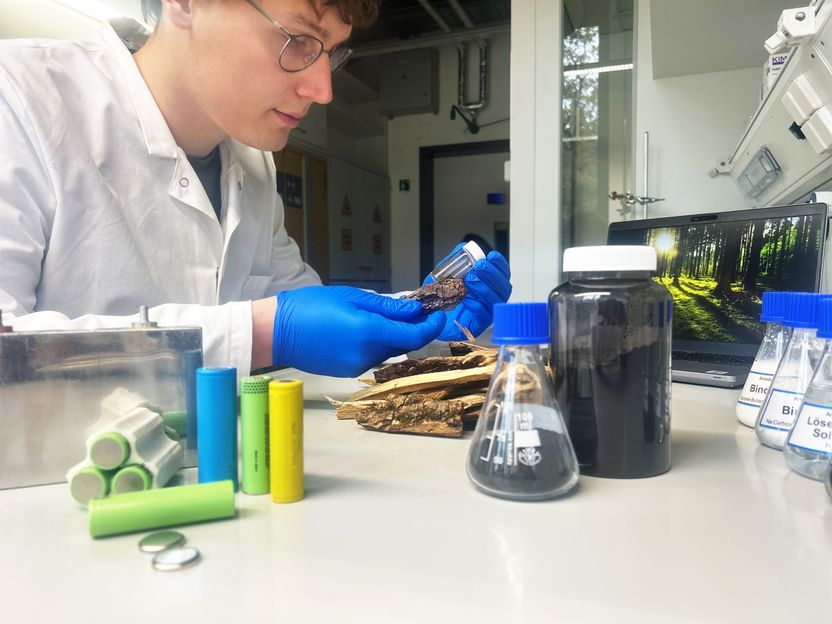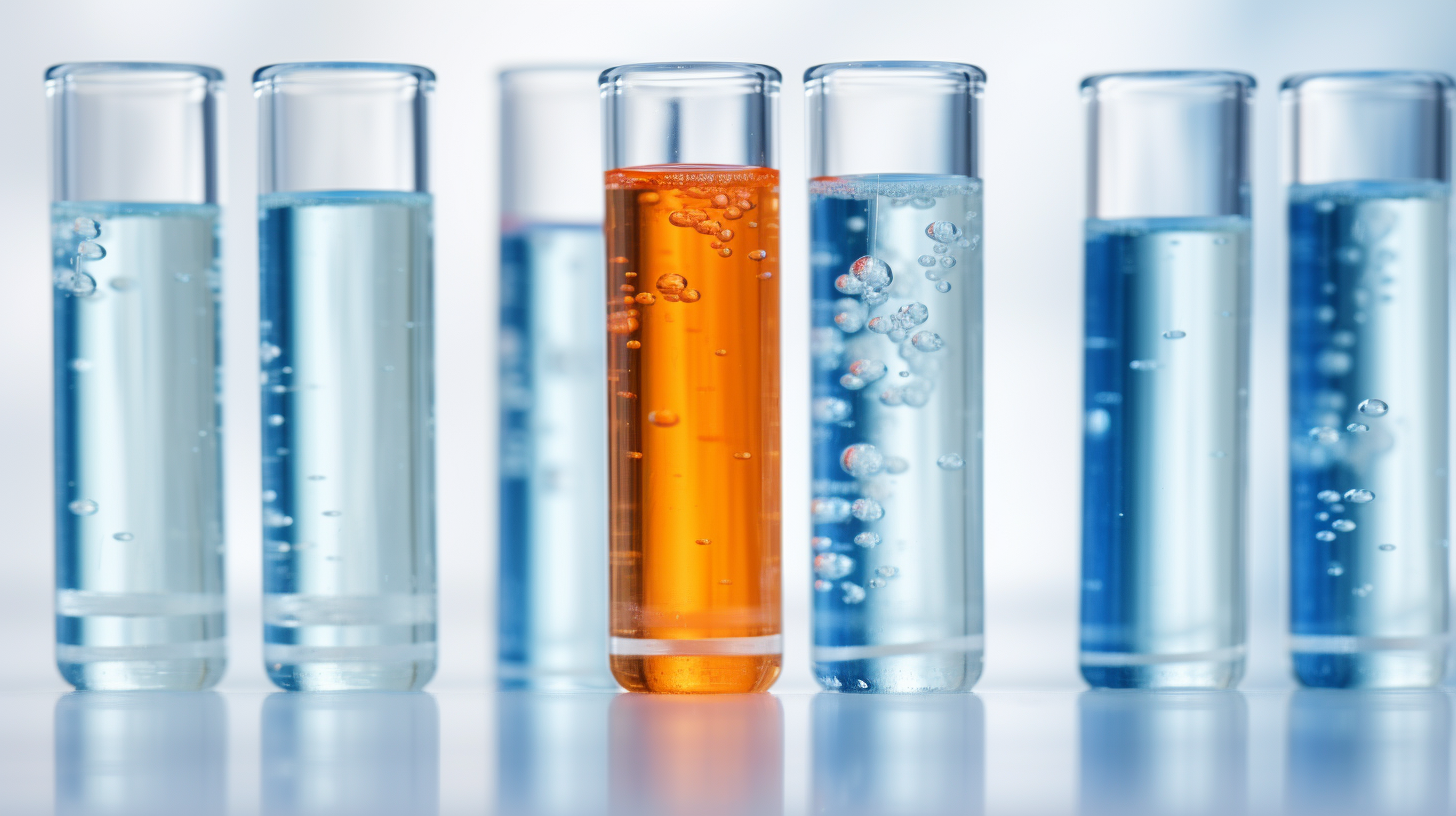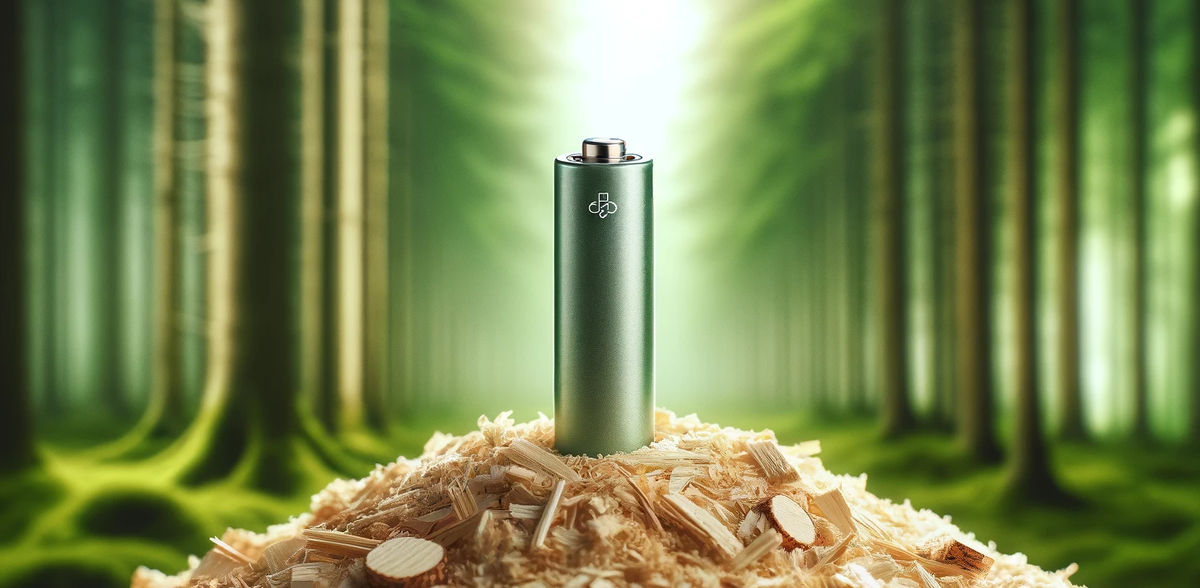Producing resource-saving batteries from wood waste
Novel digestion process
batteries are crucial for the change in mobility and energy supply. Lithium-ion batteries have been the most commonly used battery type in electric cars to date, but the availability of raw materials is a major challenge here. Researchers at Aalen University, led by Prof. Dr. Volker Knoblauch, are now pursuing an alternative strategy and are focusing on sodium-ion batteries. The aim is to use wood waste as a starting material for battery components. Aalen University will receive around one million euros in funding from the Carl Zeiss Foundation for the new project, which will start at the beginning of 2024.

Researchers at Aalen University are pursuing the goal of producing resource-saving batteries from wood waste.
Frida Akulova, Hochschule Aalen
In view of the energy transition, the efficient use of resources and the decoupling of resource consumption from economic growth is becoming increasingly important. Although lithium-ion batteries are very powerful according to the current state of the art, they are based on limited available resources. Sodium-ion batteries are intended to provide a sustainable, cost-effective alternative here - but their performance is not yet competitive.
Hard carbons are usually used in sodium-ion batteries. These can be obtained from plant materials such as wood waste in a resource-saving process known as pyrolysis - the thermal decomposition of chemical compounds. The highly fluctuating composition of these materials has so far led to intolerable fluctuations in their properties.
Novel decomposition process aims to solve the problem
The "HANa" project (High-performance anode materials for resource-saving Na-ion batteries based on lignin and hemicellulose from hardwood and softwood waste) aims to solve this problem. Using a new type of wood pulping process, the components lignin and hemicellulose with defined properties are extracted from wood waste. These are then pyrolyzed into hard carbons and should be of a consistently high quality - with only slight fluctuations. HANa covers the entire process chain from wood pulping, pyrolysis and electrode development to installation and testing in battery cells. The interdisciplinary project group, led by Prof. Dr. Volker Knoblauch from the Institute of Materials Research (IMFAA), includes Prof. Dr. Katharina Weber from the Research Institute for Innovative Surfaces (FINO) and Prof. Dr. Willi Kantlehner, who are proven experts in the fields of organic chemistry, materials science and battery technology. "It would be a huge step towards sustainable battery storage, and we are delighted to have been awarded the contract by the Carl Zeiss Foundation," says Knoblauch, summarizing the Aalen researchers' excitement about the project.
Note: This article has been translated using a computer system without human intervention. LUMITOS offers these automatic translations to present a wider range of current news. Since this article has been translated with automatic translation, it is possible that it contains errors in vocabulary, syntax or grammar. The original article in German can be found here.
Topics
Organizations
Other news from the department science

Get the chemical industry in your inbox
By submitting this form you agree that LUMITOS AG will send you the newsletter(s) selected above by email. Your data will not be passed on to third parties. Your data will be stored and processed in accordance with our data protection regulations. LUMITOS may contact you by email for the purpose of advertising or market and opinion surveys. You can revoke your consent at any time without giving reasons to LUMITOS AG, Ernst-Augustin-Str. 2, 12489 Berlin, Germany or by e-mail at revoke@lumitos.com with effect for the future. In addition, each email contains a link to unsubscribe from the corresponding newsletter.
Most read news
More news from our other portals
See the theme worlds for related content
Topic World Battery Technology
The topic world Battery Technology combines relevant knowledge in a unique way. Here you will find everything about suppliers and their products, webinars, white papers, catalogs and brochures.

Topic World Battery Technology
The topic world Battery Technology combines relevant knowledge in a unique way. Here you will find everything about suppliers and their products, webinars, white papers, catalogs and brochures.
Topic world Digestion
Sample digestion is a critical step in chemical analysis that often determines the success or failure of an investigation. It involves the targeted transformation and preparation of a sample to make the components of interest accessible for analysis. Various methods such as thermal, chemical or enzymatic digestion are used to dissolve matrix components, remove unwanted components and release target substances.

Topic world Digestion
Sample digestion is a critical step in chemical analysis that often determines the success or failure of an investigation. It involves the targeted transformation and preparation of a sample to make the components of interest accessible for analysis. Various methods such as thermal, chemical or enzymatic digestion are used to dissolve matrix components, remove unwanted components and release target substances.




























































